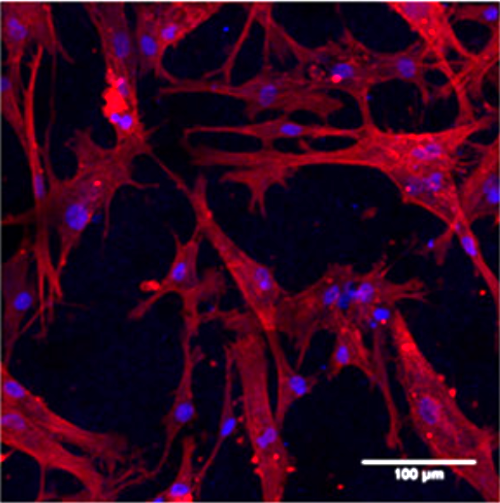Cu2+, Co2+ and Cr3+ doping of a calcium phosphate cement influences materials properties and response of human mesenchymal stromal cells.
The application of biologically active metal ions to stimulate cellular reactions is a promising strategy to accelerate bone defect healing. Brushite-forming calcium phosphate cements were modified with low doses of Cu2+, Co2+ and Cr3+. The modified cements released the metal ions in vitro in concentrations which were shown to be non-toxic for cells. The release kinetics correlated with the solubility of the respective metal phosphates: 17-45 wt.-% of Co2+ and Cu2+, but <1 wt.-% of Cr3+ were released within 28days. Moreover, metal ion doping led to alterations in the exchange of calcium and phosphate ions with cell culture medium. In case of cements modified with 50mmol Cr3+/mol β-tricalcium phosphate (β-TCP), XRD and SEM analyses revealed a significant amount of monetite and a changed morphology of the cement matrix. Cell culture experiments with human mesenchymal stromal cells indicated that the observed cell response is not only influenced by the released metal ions but also by changed cement properties. A positive effect of modifications with 50mmol Cr3+ or 10mmol Cu2+ per mol β-TCP on cell behaviour was observed in indirect and direct culture. Modification with Co2+ resulted in a clear suppression of cell proliferation and osteogenic differentiation. In conclusion, metal ion doping of the cement influences cellular activities in addition to the effect of released metal ions by changing properties of the ceramic matrix.

- Mater Sci Eng C Mater Biol Appl. 2017 Apr 1;73:99-110
- 2017
- Medical Biology
- 28183678
- PubMed
Enabled by:
